Chicken of the Woods – Edibility, Identification, Distribution
Laetiporus sulphureus
- Edibility – 3 – young, tender specimens only. Some people have an adverse reaction, so try a small amount for the first time. Traditional advice is to cube and simmer in salted water for 5 mins before use, and you should certainly do this when trying it for the first time, but I have enjoyed very young tender slices just grilled, fried or barbecued. I suspect many reports of adverse reactions are the result of eating old, past-their-best specimens. Tender cuts are excellent in pies, stews, currys etc – a genuine textural substitute for chicken!
- Identification – 4 – Bright orange, irregular, velvety (never hairy), layered brackets
- Distribution – 2 – enigmatic and occasional – I seldom actively search for them, but tend to look up more than usual in oak woodlands.
- Season – May – October – Often coming in two ‘waves’ – the best wave generally coming in early summer (May/June) then another one in autumn.
- Habitat – Predominantly on oak trees, standing or fallen, but also other species of hardwoods and occasionally conifers (less common).
- Harvesting – Take only young, tender, moist specimens, or sections of the whole thing. The outer edge of older, dry specimens can remain worthwhile when the rest is past it. It is possible to cut out sections at intervals, keeping fresh food growing on the tree. You may need a ladder or good climbing skills. I know a chef in the highlands who shot one out of a tree!
Should I Eat Chicken of the Woods if it is Growing on Yew?
Many books advise not to eat CotW if it is growing on yew (which is highly toxic). However, I have met a few people who have eaten yew-hosted chicken of the woods for many years with no ill effects.
I’ve been told by mycologist-mycophagists whom I trust, that CotW mycelium ‘disassembles’ the problematic compounds of yew (taxine alkaloids) into safe components – fungi are clever like that!
So the main danger is not that taxine is present in the the flesh of the mushroom itself, but that the mushroom may have incorporated significant pieces of yew (twigs, needles etc) as it rapidly grows (this often happens with CotW and other large, quick-growing brackets), and that these are missed during the cooking/cleaning process and ingested in problematic quantities. Given that 50g of yew needles is estimated as a potentially lethal dose for an adult, you’d need to be pretty shoddy with your cleaning to kill yourself! However, a much lower dose could make you ill, and yew really isn’t a tree to take chances with.
So on balance, while I might personally eat a chicken of the woods growing on yew (especially in a lean year for them), I’m not recommending this.
Better to go hunt it on other trees if you feel worried…you won’t enjoy it anyway if you think it might make you sick!
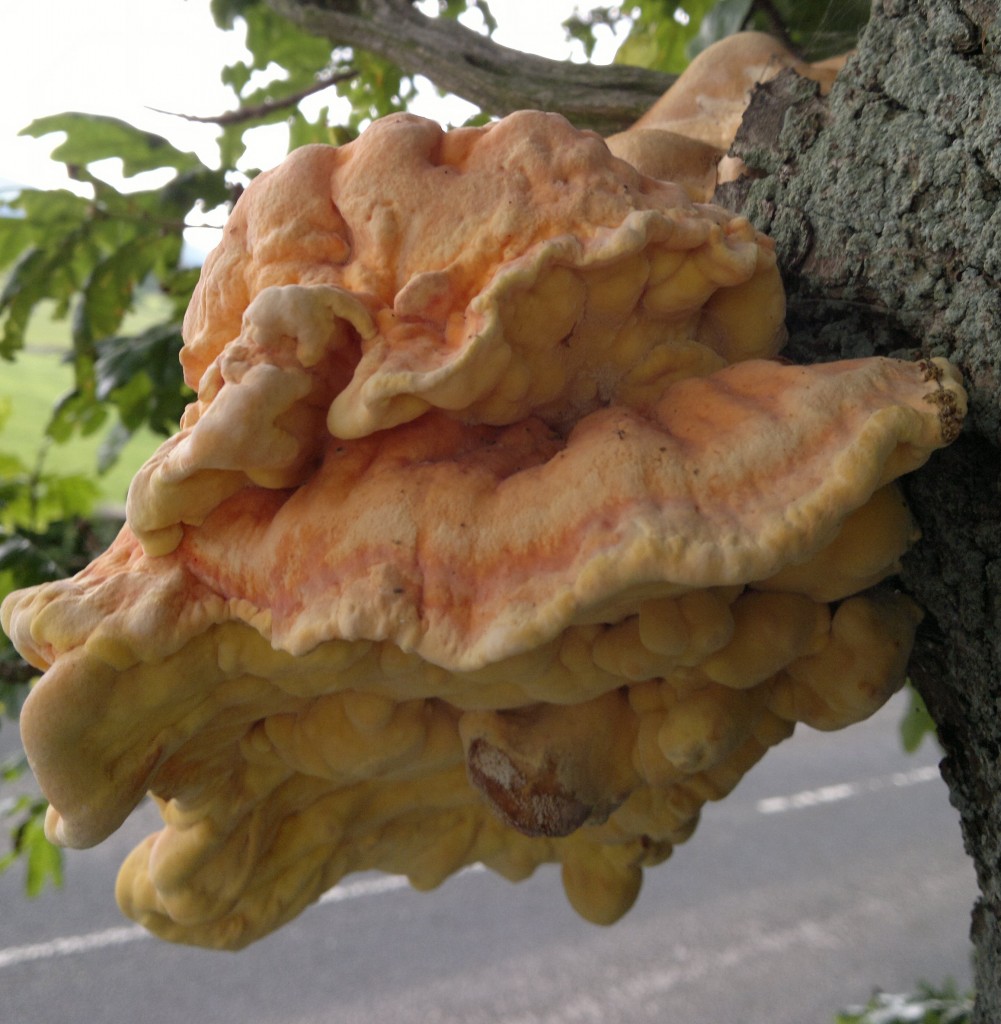
Older chicken of the woods. Most of this specimen was too dry and hard to digest for the kitchen, but I did dehydrate, powder and add to my seaweed/fungi stock powders.
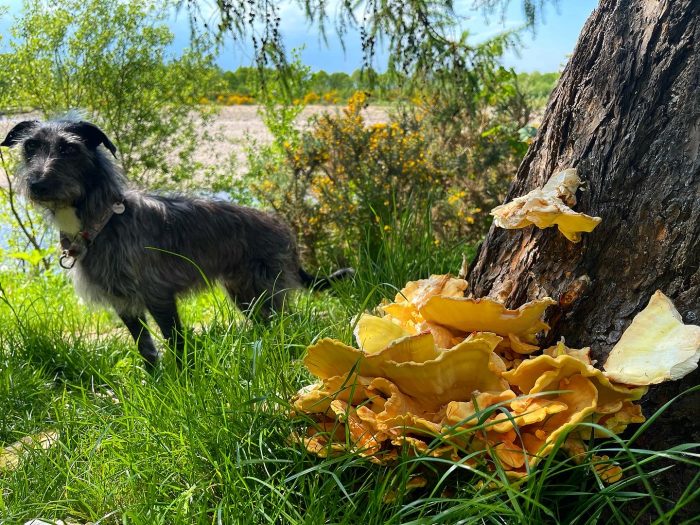
Chicken of the Woods growing on larch, June, NE Scotland. While most chicken of the woods is found on hardwoods (especially oak), it has diverse taste and is occasionally found on conifers – including yew (see my discussion of this above)
Suggested links:
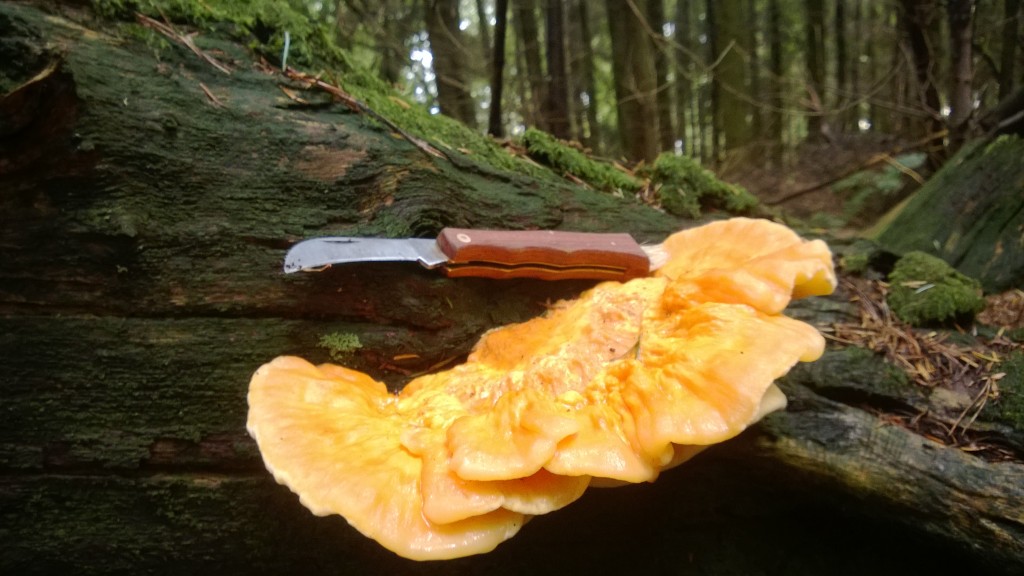
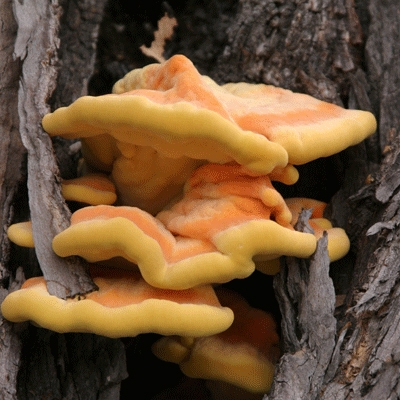
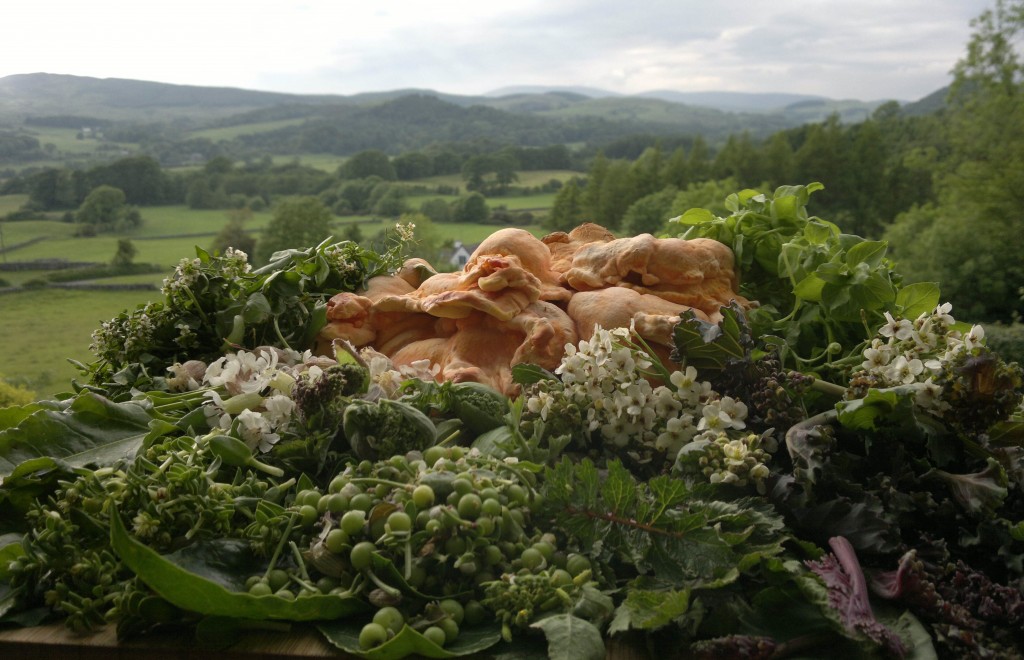
4 Comments
Hi, I have found some old COTW but i know it cannot be past Edibility as it was moist and literally dripping with juice once cut. Was flexible whilst on the tree and was so tender it was breaking easily in my hands but not in a harsh way if that makes sense more like when you have tender chicken and it falls off the bone. I am happy to send photos of it on the tree and after being cleaned and pepper by me.
Hi Karianne, That’s great. I’m not sure what you are asking or offering here, but hope you enjoy your juicy bit of chicken! 🙂
Mark
Out of all the wild mushrooms, I have foraged, I have to say that chicken of the woods was the one I enjoyed the most, but unfortunately, I only found one once. Next is russula (fried in a little oil and served with freshly grated feta cheese) and then are the porcini, which are amazing with pasta or in stews. There are many other delicious wild mushrooms that I love. Thank you for this amazing information!
Adverse reactions are not overstated! I had the runs (polite term for my toilet incarceration) and sickness for 24 hrs the first time, from a perfect specimen. But I persevered, and seem to have built up a tolerance…